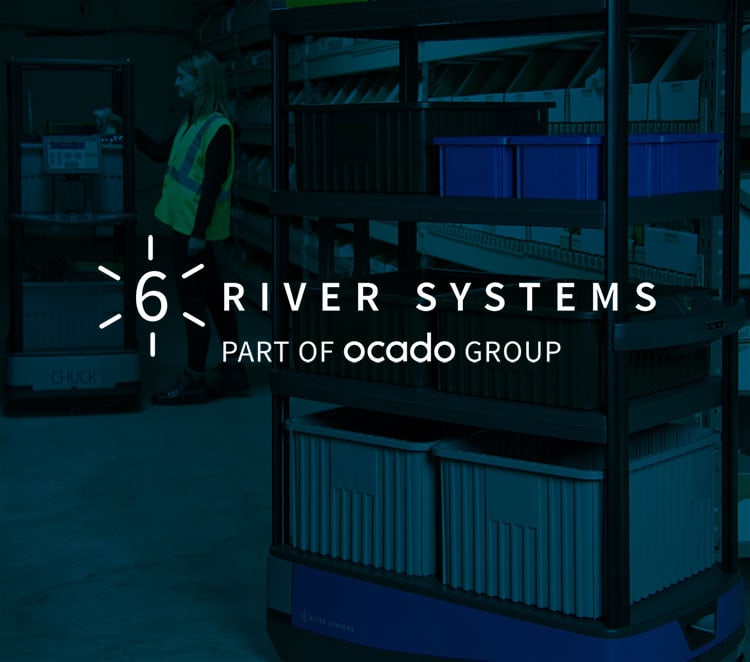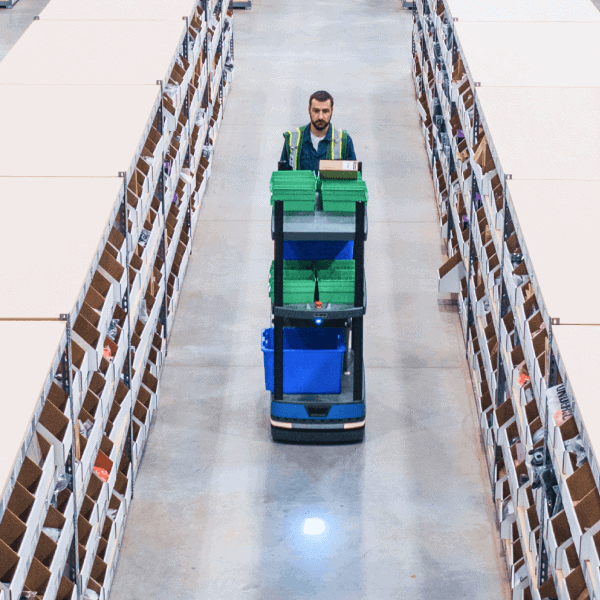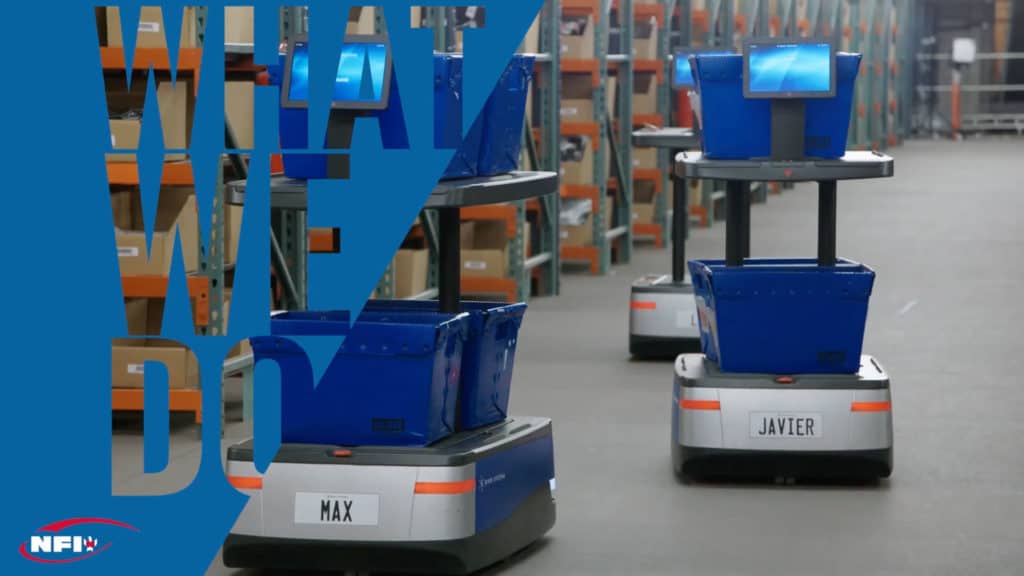The e-commerce boom has increased the load on warehouses and distribution centers. To accommodate the surge in demand, distribution centers and warehouses are ramping up hiring. However, prior to the COVID-19 pandemic, there was a shortage of workers in the market, resulting in a surge in the labor costs throughout supply chains. The average hourly wage of a warehouse employee has increased by 16% over a decade. Considering that labor costs comprise almost two-thirds of warehouse operating costs, increasing wages will have a huge impact on warehouses’ bottom lines.
Over the last decade, the cost of automation has come down dramatically. Aside from the financial gains, automated picking solutions help to increase the efficiency, productivity, safety and reliability of warehouse operations. When your warehouse inventory is of standard sizes, it is quite easy to implement automated piece picking solutions. Here’s a look at the financial advantages of implementing automated piece picking.
1. Decreased labor costs
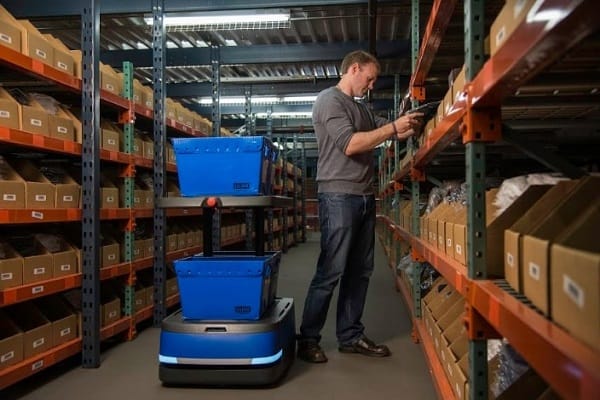
A reduction in labor costs is the most obvious financial benefit of adopting an automated piece picking solution. Automated piece picking robots reduce the repetitive manual labor involved in picking by augmenting the work of human associates. Automating these tedious, manual tasks will reduce the demands on human labor.
With traditional picking efforts, employees often must travel long distances in the warehouse. In some cases, warehouse associates are required to pick heavy inventory, increasing the risk of workplace injuries. Automated picking can reduce these risks and deliver cost savings by allowing human associates to focus on more complex tasks.
Additionally, smart automation solutions like collaborative mobile robots are intuitive to operate, reducing the time and costs associated with training and onboarding. Chuck by 6 River Systems offers onboard lighting and on-screen images and prompts to accelerate training, allowing new associates to reach peak performance standards in hours. One operator saved more than $1,000 in training costs for every new hire after implementing 6 River Systems’ solution.
2. Reduced picking errors
For a typical warehouse, the picking error rate is around 1% to 3% and is a major hindrance to improving productivity and profitability. Picking errors result in cost increases beyond labor costs, including lost sales, returns, additional shipping, customer service costs and repackaging costs. Implementing automated picking solutions is one of the most effective ways to reduce picking errors. Solutions like collaborative mobile robots guide associates through picking tasks, identifying the items and quantities to pick so associates can quickly and easily validate that they’ve picked the correct items or pieces.
3. Increased pick rates
The pick rate is the number of orders picked in a period, typically per hour. The pick rate is an indicator of the efficiency of warehouse operations. Automated piece picking solutions improve the pick rates in a warehouse dramatically. Unlike humans, robots and machines don’t experience fatigue and can continue working at the same pace throughout the entire time of operation.
The reduction in human labor demands and near-zero picking errors improve pick rates and increase productivity, reducing the cost to pick and pack the same amount of inventory. For example, one leading home goods retailer tripled its pick rates by implementing 6 River Systems’ collaborative automation solution. Another operator increased pick rates by 252%, enabling the operation to fulfill 15% more orders in 67% fewer picking hours than the previous year.
4. Increased reliability
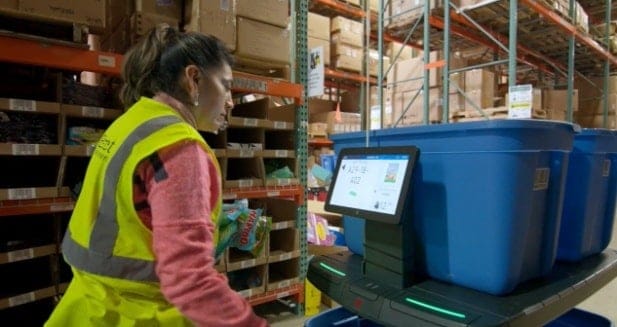
Warehouse and distribution center operations are heavily reliant on labor, and labor shortages in the pre-COVID era made maintaining stable operational levels challenging. Maintaining shifts and managing employees’ time off is a time-consuming and high-effort task, particularly as warehouses and distribution centers cope with the need for social distancing and meeting COVID-19 health and safety guidelines.
Staffing and scheduling challenges may make it difficult for warehouses and distribution centers to have the necessary staff available for each shift, throwing a wrench in operations. As a result, companies may face decreasing pick rates, increased shipping time and reductions in efficiency, increasing operational costs and indirect costs, such as lost sales. Automated piece picking solutions help to alleviate these risks. Since robots can work continuously without breaks or time off, these solutions can help warehouse and distribution center operators ensure reliable operations around the clock.
5. Decreased safety costs
Accidents are inevitable in warehouse operations. Maximum possible measures must be taken to ensure the safety of employees and inventory. Automated piece picking solutions can reduce aisle traffic and congestion while also reducing fatigue by alleviating the manual material handling demands on human associates, resulting in fewer accidents and increased workplace safety. While it’s not possible to eliminate safety risks completely, picking robots can help to mitigate the risks significantly.
6. Improved labor retention
Automated piece picking solutions can handle labor-intensive and repetitive warehouse tasks, eliminating the long walk and reducing physical strain and fatigue among warehouse associates. Because solutions like Chuck by 6 River Systems are easier for warehouse associates to learn and improve productivity, associates can achieve performance objectives faster, boosting employee morale. Coupled with increased workplace safety, reduced physical demands and increased productivity contribute to greater employee satisfaction and retention. As a result, warehouse managers need to hire and onboard new staff less frequently, reducing hiring and training costs.
Considering the many cost-saving benefits companies can gain from implementing automated piece picking solutions, the return on investment is high. Learn more about how to transform your fulfillment operations with collaborative mobile robots by downloading our white paper, The Business Case for Collaborative Mobile Robotics.
